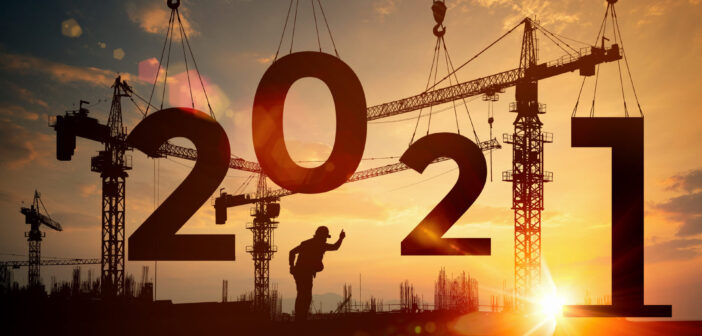The cost of doing business per square feet has always been challenging in the top 10 cities of India. The ever increasing migration for jobs in these cities have made the housing affordability even bigger challenge. Critics are not cynical when they question as to what extent and till when these cities will continue to be filled up like a soda bottle. Aren’t our metro cities on the verge of a population blast? Come 2021 and Track2Realty analysis believes the infamous Coronavirus in a strange way has shown the way forward.
While the companies across the industry have realised the advantages of Work From Home (WFH), it is also paving way for the workforce to shift to home towns or other Tier II cities where the cost of living is less, work & life balance is better and housing affordability has not gone beyond the acceptable limits. And that promises to goad the Indian real estate developers to these high potential & yet neglected Tier II cities.
Story Updated: September 19, 2023
Will Tier II cities attract real estate funds?
While the action in the Indian real estate has started moving out of the comfort zone of metro cities, Tier II cities are yet to catch up with the most important need of institutional funding. Post Covid, there is no denying that the sentiment has shifted to these Tier II cities. But there is a big question mark over the long-term financial viability of the business in these smaller cities.
Facts speak for themselves. As per the industry reports:
Major real estate investments are concentrated in the key markets of metro cities
Bengaluru, Mumbai and NCR alone get nearly two-third of the investments in the real estate
Institutional funds are reluctant to put in money with the lesser known developers of Tier II and III markets
The large question is what should be done to change the market trend of investment. Analysts believe these are early days to evaluate the investment worthiness of the high potential but hitherto unexplored markets. The shift of national level listed developers with sound track record of attracting investments is pretty slow. These developers are mostly testing the waters as of now.
The local level eco system of many of the smaller cities is not very business friendly. Even the property brokerage business is not very transparent and organised in these Tier II and III cities.
Once the larger players will start delivering the projects in these smaller cities the benchmark of expectations and professionalism will definitely go up. This will have a snowball effect and the institutional funds will have more confidence in these markets.
Also, some of the global names like Berkshire Hathway HomeServices have announced to enter into Tier II and III cities. It is a slow catching up but definitely these smaller cities are witness to professionalism and change in the eco system that would attract sizeable investment ahead.
Story Updated: October 24, 2021
Odds favour Tier II & III cities
While the Covid has changed the market dynamics and feasibility of Work From Home has brought the Tier II & III cities in the reckoning of the real estate opportunities, critics had been raising their own concerns to be apprehensive. Some of the arguments were:
Is talent pool shift to Tier II & III cities a long term phenomenon?
Would corporates shift their base to smaller cities?
Can Tier II cities attract the cosmopolitan talent pool beyond the home town prodigies?
Won’t connectivity & transportation be an issue with these smaller cities?
As the world is learning to live with the New Normal post Covid, many of these pressing issues are rather being seen as an opportunity. For example:
The cost of doing business per square feet is way too lower in Tier II & III cities?
Tier II & III cities are emerging homes to logistics & warehousing
Quality housing at affordable rates are available for the workforce
A number of upcoming industrial corridors are running through many of these smaller cities to provide seamless connectivity
Government plans to open 100 additional airports to connect 1000 new routes connecting smaller towns
It may seem early and premature to make a conclusive statement as of now, but what could be vouchsafed is the fact that the Tier II & III cities’ potential is yet to be tapped. Covid has turned an adversity into opportunity for the smaller cities.
Story Updated: August 16, 2021
Which Tier II cities are attracting investments?
When a global brokerage firm with its India entry announced to enter Ayodhya property market, many analysts believed the decision was goaded by the hype around the Ram Mandir. However, on a closer look this perception is just borne out of the outside view. Today, no other city in the State of Uttar Pradesh is showing property appreciation as much as the city of Ayodhya.
Reasons of Ayodhya turning into property hotspot is growth prospect in the given city, business opportunities, cost of doing business per square feet, the affordability in home prices when compared with the metro cities, reverse migration of the professionals, improving infrastructure and the upcoming airport.
Ayodhya is just one of the Tier II cities that is today witness to price appreciation way higher than the top 10 cities on the property landscape. It is also driving the large developers into these so far unexplored territories. For example, a leading real estate player from Noida has over the last few years established its footprint in and around Gorakhpur, the political constituency of the Chief Minister of the State.
Down South also, the scene is moving from Bengaluru and Hyderabad to Tier II cities like Kochi, Coimbatore, Vizag and other such regions. Though Amravati proved to be a dampener for the first movers, the real estate analysts believe there are many other small cities of Telengana that would soon appear on the property landscape as investment in those places have started for logistics and warehousing, thus turning these cities into job magnets as well.
2022 goading to smaller towns?
Story updated on 23rd May, 2021
When the forecasting at the beginning of 2021 suggested that the year would goad the Indian real estate to Tier II & III cities, there were many question marks than probably what one could have answered at that point of time. It was even pointed out that the Covid-19 is a temporary phase and the market will be back to its normal once the Covid wave settles down.
However, the second wave of Coronavirus forced both the real estate developers as well as the home buyers to evaluate their cost & benefit of moving to periphery locations and the smaller towns yet again. Now, the built environment of the Indian real estate is looking at the business possibilities and open spaces in the smaller towns from the standpoint of long-term solutions.
More importantly, it is easier for the developers to incorporate the concept of wellness into the smaller towns projects. Reason is that the land cost is relatively much cheaper in these places, making it feasible to go for the large format projects with more open spaces and amenities.
From the home buyers’ standpoint, home towns in Tier II and III cities look more feasible to work and affordable to live. After all, there are many industries that are investing heavily into the IT and making the Work From Home a reality for the workforce. Naturally, they are not going to reverse the trend ahead after having invested deep into the course of New Normal and also cutting the cost of office spaces in the process.
It is not just a demand & supply phenomenon that the industries are evaluating their cost & benefit of investment in Tier II cities. Even the respective State Governments are envisioning investment with these developments. For instance, in a tourist State like Goa, the Goa government has been working in partnership with Software Technology Parks of India (STPI) to create the infrastructure to facilitate software exports and promote tech entrepreneurship in the region.
As tech companies become location agnostic, options like Goa could beckon more strongly and not just remain a utopian dream of the Next Generation. Then there are many other States that are working to incentivise the manufacturing in their key Tier II cities as part of the Make in India programme. These cities are further incentivised by the upcoming industrial corridors that run through the cities. Analysts believe these Tier II cities are hotbed for future growth of the economy in general and the real estate market in particular.
2021: Real Estate Realities in Tier II and III cities
Emergence of organized real estate market in smaller cities
Less demand & supply imbalance
More quality housing in demand with Work From Home
Lesser migrant labour issues
Lesser construction curbs due to Covid
More profit margins for the developers with lesser land values
Property prices rising but yet far lesser than Top 10 cities
Comparing Tier I & Tier II cities
The Indian cities are classified as X (Tier I), Y (Tier II), and Z (Tier III) categories by the Government of India, based on the population density of the city. There are 8 metropolitan cities categorised as Tier I cites. These are: Delhi, Mumbai, Bangalore, Chennai, Hyderabad, Kolkata and Pune. 104 cities are categorised as Tier II cities, while the rest of the cities fall into Tier III cities.
Tier I cities are densely populated and have higher living expenses. There are major international airports, industries, top multi-specialty hospitals, education, and research institutes in these Tier I cities. In the densely populated Tier I cities, the living costs are way too high and people have to pay more money to get goods and services. That is, the living expense will be greater.
Urban planners and the economists believe that certain cities, officially classified as Tier II, are as goo0d as any Tier I city. The economic activities and lifestyle in the cities like Gurgaon, Noida, Vellore, Coimbatore, Kochi, Thiruvananthapuram, Patna, Rajkot, Goa, Lucknow and Jaipur could elevate these cities to the next level of growth in the coming years.
Advantages of Tier II Cities
Infrastructure and connectivity
Pollution level
Lesser traffic bottlenecks
Living expenses
Better quality of life
Lower real estate prices
Lower cost of doing business
Disadvantages of Tier II Cities
Poor international air connectivity
Lesser economic activity
Absence of MNCs
Lesser job opportunities
Aditya Kushwaha, CEO & Director Axis Ecorp agrees that the Covid-19 pandemic has altered how we live, work, learn, and play. The overall health, hygiene, and wellness concerns during COVID-19 have significantly shifted the focus towards spacious holiday homes set amid luxuriant greenery, away from densely packed Tier I cities. Further, riding on the wave of sustainability and prospective investment, the holiday homes/secondary housing has emerged as a sought-after option for the segment of buyers whose jobs and lifestyle quotient have remained unaffected in the wake of pay cuts.
“The trend has changed, and now the real estate scenario has moved from top metro cities to Tier II and other tourist destinations. Investors have a strong belief that they could find better entry prices, flexibility, and sizeable returns. There are good avenues for youngsters beyond top metro cities. It is essentially because of the Work From Home concept that the demand for homes in Tier II cities and even the holiday homes is gaining traction,” says Kushwaha.
Hiral Sheth, HOD – Marketing, Sheth Creators also believes that the Internet has been the backbone of 2020 with most people working from home. With a lot of people shifting back to their home towns during lockdown and people realising the importance of having a home of their own, there has been a spike in home buying in Tier-II cities. With the trend getting popular and reputed developers operating here, quality of housing would also improve in these cities.
“While realty costs at Tier-II cities will be lesser as compared to the Tier-I city, people will also have benefits like large open spaces, staying closer to family, low pollution etc. Most Tier II cities today have progressed with good infrastructure advancements like metro stations, excellent public transport, and availability of basic facilities like schools, hospitals, banks, and shopping markets,” says Sheth.
Deepak Goradia- Vice Chairman and Managing Director, Dosti Realty points out that with offices planning to adopt work-from-home for a long-term basis, many prospective homebuyers are considering shifting base to the peripheral areas and investing in homes at more affordable prices. “The buyer’s preference for a change in location is fuelling property demand in the peripheral locations of the cities today.”
It has always been debated as to whether the time has come to decongest the metro cities and shift the businesses to Tier II cities. The Coronavirus in 2020 has rather helped to declutter the thought process and forced to turn the thoughts into action. It is generally believed that by the second half of 2021 the demand would be increasing in Tier-II cities owing to better employment opportunities, infrastructure growth, and connectivity improvements.
While Tier II cities offer better value-based pricing and larger spaces and lower cost of construction, there are also grey zones to be ironed out. Constraints like easy approval of FDI for projects in these cities has been a major challenge. However, this can be made easier by the Government through policies and tax level initiatives and benefits that could entice people to invest and set up living & working bases in these high potential Tier II cities.
Ravi Sinha
@ravitrack2media
Track2Realty is an independent media group managed by a consortium of journalists. Starting as the first e-newspaper in the Indian real estate sector in 2011, the group has today evolved as a think-tank on the sector with specialized research reports and rating & ranking. We are editorially independent and free from commercial bias and/or influenced by investors or shareholders. Our editorial team has no clash of interest in practicing high quality journalism that is free, frank & fearless.
Subscribe our YouTube Channel @ https://bit.ly/2tDugGl





